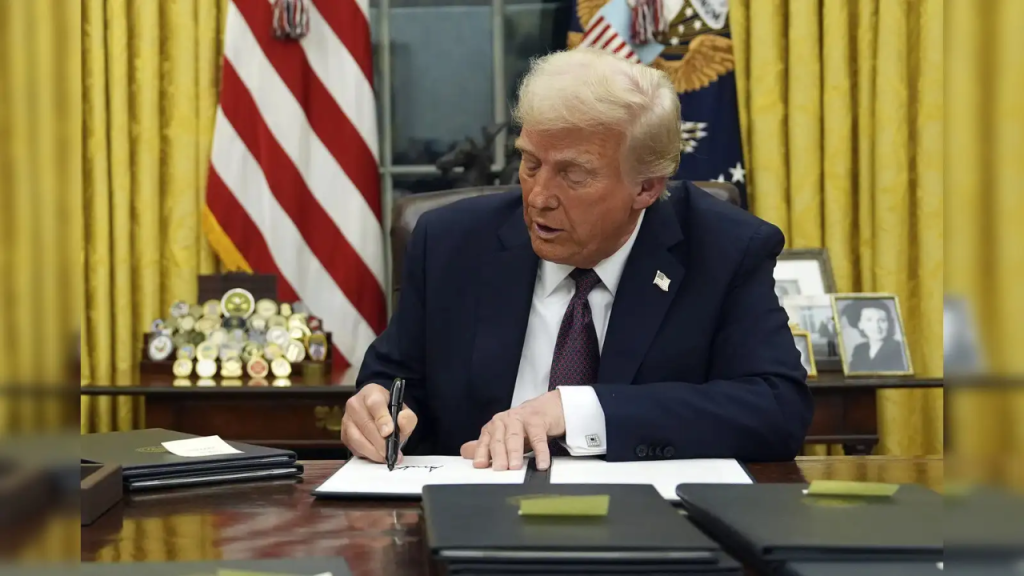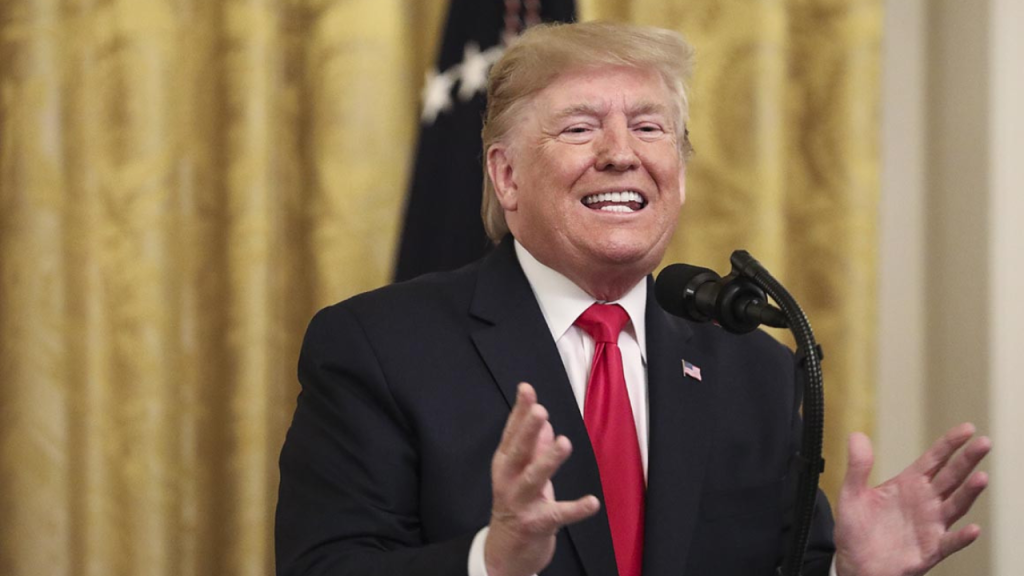
Former President Donald Trump’s latest economic proposal is making headlines once again. This time, it’s about scrapping individual income tax for all Americans.
The idea sounds appealing—more money in everyone’s pockets and a potential boost in consumer spending. But many experts are concerned about how this plan would work and what it could mean for inflation, job security, and public services in the long run.
Trump’s proposal is simple on the surface. No more income tax for individuals. That means workers could take home more money each month.
According to GOBankingRates, this could increase the average person’s paycheck, giving them more freedom to spend, save, or invest. In the short term, this kind of move could lift the economy by pushing people to spend more. But where will the government get its money from if it no longer collects income taxes?
The plan includes raising tariffs on imported goods to make up for the lost income tax revenue. So instead of taxing paychecks, the government would get more money by charging extra fees on goods brought into the country.
The idea behind this is to encourage people to buy American-made products while also boosting local businesses. But higher tariffs often mean higher prices on everyday items—from electronics to clothing to food. And when prices rise, people may find that the extra money they’re getting from not paying taxes doesn’t go very far.
Some financial experts believe this plan might cause inflation. Crystal Stranger, who heads a tax consulting firm, says when people suddenly have more money to spend, demand can go up fast.
But if supply doesn’t keep up, prices rise, which can cancel out the benefits of higher take-home pay. In simple terms, things might cost more, and people may not feel any richer than before.
There’s also the question of how companies will react. Rick Miller, a financial planner, thinks businesses could take this chance to change how they pay their employees.

Instead of higher salaries, they might offer bonuses, benefits, or flexible perks to attract workers. That could be good for some employees, especially in sectors like sales or tech, where performance-based pay is common. But it might also lead to more complicated salary negotiations and less predictable income for workers.
A deeper issue is job outsourcing. Without the pressure of income tax deductions, companies might start looking for cheaper labor in other countries. Stranger warns that this could make things worse for the American job market.
If hiring workers abroad becomes even more cost-effective, U.S. jobs could be at risk, especially in industries like manufacturing, customer service, and even tech support.
Another concern is how this plan could affect public services. Federal income tax helps pay for essential programs like education, healthcare, infrastructure, and national security.
If that money disappears, how will these services survive? Some states might try to fill the gap by raising sales taxes, which are already high in many places. But this could hurt low-income families the most, because they spend a larger portion of their income on basic goods and services.
Brian Sigritz from the National Association of State Budget Officers notes that many states are already considering tax cuts, not just on income but also on sales and property.
This means less money for state budgets overall. If Trump’s federal tax cut becomes reality, states might have to increase other taxes or reduce spending on public services just to stay afloat.
For people with lower incomes, a shift away from income taxes to more consumption-based taxes could be a heavy burden. Rick Miller explains that families with limited cash flow already struggle to cover basic expenses.
If prices go up and there’s no extra support from the government, these families could find it even harder to make ends meet.
In summary, Trump’s no-income-tax idea may seem exciting to some, especially if it means more money in the short term. But the plan brings many challenges.
There are questions about rising inflation, job security, and how public services will be funded. Like many big policy changes, it could help some while hurting others.
That’s why it’s important to look at all sides of the issue before deciding whether this proposal would improve the lives of most Americans.
